October 7 -13, 2012: Issue 79
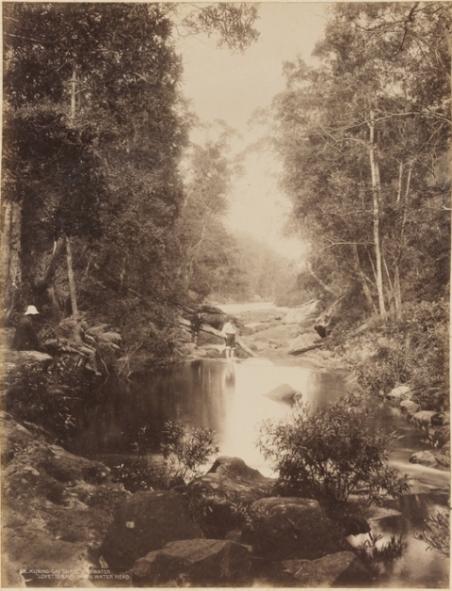
Head of Lovett Bay. Pittwater. 1879 -1892. Image No a924068. Courtesy State Library of NSW.
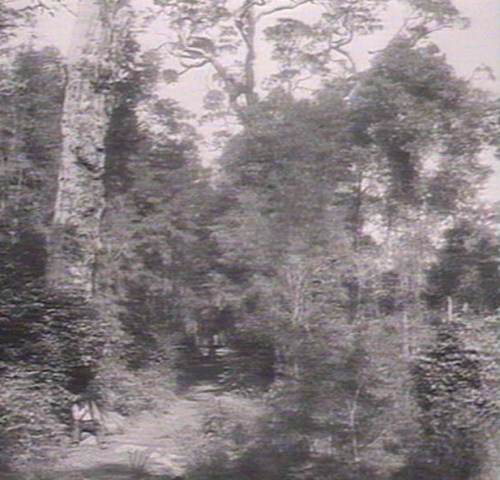
Pittwater. Lovetts On the pathway up Flagstaff Hill, 1899. Government Printing Office 1 - 08831. Courtesy State Library of NSW.
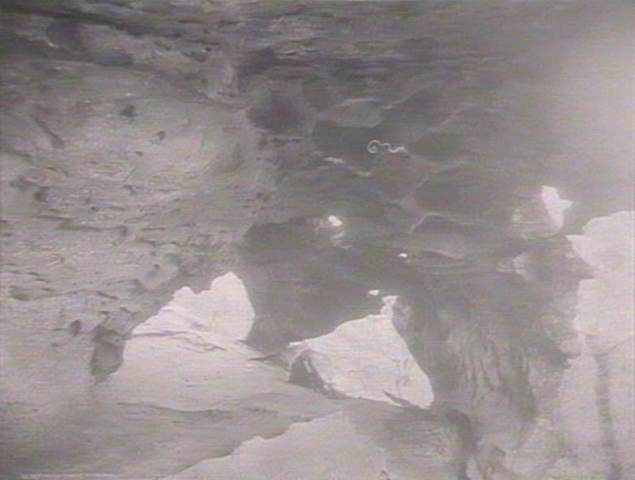
Pittwater. Lovett Bay. Path up Flagstaff Hill & natural tunnels, 1899. Government Printing Office 1 - 08835. Courtesy State Library of NSW.
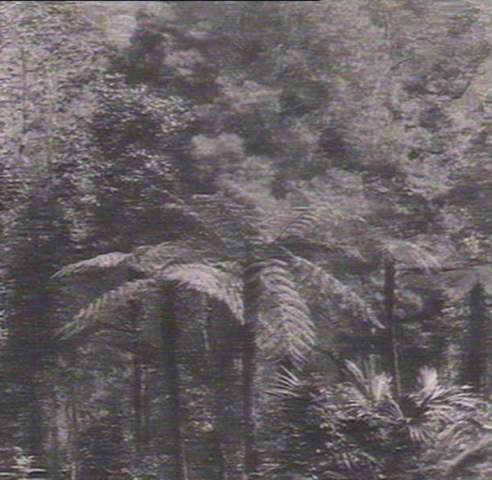
Pittwater. Lovett Bay. Zigzag Path up Flagstaff Hill & natural tunnels, 1899. Government Printing Office 1 - 08833. Courtesy State Library of NSW.
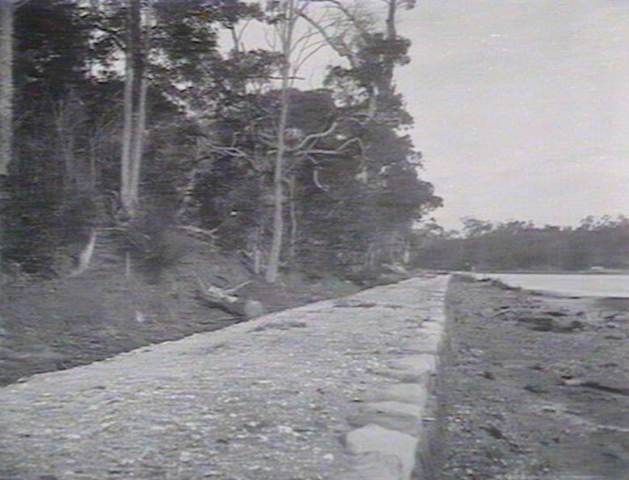
Pittwater. Lovett Bay Causeway. 1899. Government Printing Office 1 - 08829. Courtesy State Library of NSW.
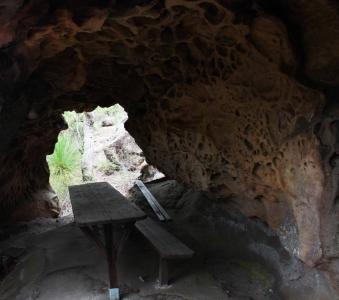
Flagstaff Hill rest stop courtesy Church Point Ferry Service.
Climb Flagstaff Hill, see for yourself how beautiful the view is. For access, take the Church Point ferry to Halls Wharf.
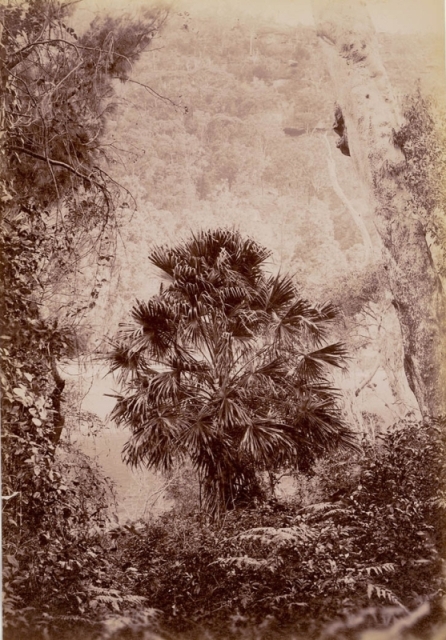
Above: Cabbage Palm, Kuring Gai Chase, circa 1900-11910, Image No.: a116501, courtesy State Library of NSW.
Flagstaff Hill – Lovett Bay
Flagstaff hill, atop Lovett Bay, is also known as one of the best places to get a great view over Pittwater. Surrounded by Smooth-barked Apple (Angophora costata) Red Bloodwood (Corymbia gummifera) – Sydney Peppermint (E. piperita) and tall spotted gums, a rock outcrop, known as Birnie Lookout, which may derive from the Old English male name meaning ‘small river or stream with an island’ and refer to the view, has attracted Europeans since soon after their arrival.
As more and more people arrived in Australia, all marvelling at the natural wonders of flora and fauna many would gather boatloads and cartloads of the native flowers, particularly Christmas Bush. The degradation of bushland caused the formation of Ku-ring-gai Chase in 1894:
KURINGGAI CHASE. TO THE EDITOR OF THE HERALD.
Sir,-When on 6th October, 1892, I first submitted officially to the Minister for Lands the proposal to "dedicate the waters of Cowan Creek, and ... adjacent to same, as a national park for North Sydney, one of the principal arguments adduced was that "steps could be taken to prevent the reckless destruction of native flowers .eg, the rock-lily, formerly so abundant, is becoming scarcer every year, and must soon become extinct it not to some extent protected."
Two flowering seasons passed away before my suggestion was adopted by the preliminary notification of Kuringgai Chase in the Government Gazette of 20th June, 1894. During that interval of over 20 months wholesale depredations had been committed, not by the tourist but for trade purposes which left the foreshores for miles denuded of the special vegetation which had made them attractive in former years- the last tree ferus had been cut down, the rocklilies almost extirpated (the cutting of their flowers did no permanent harm, but almost every accessible plant had been torn away by the roots, and hundreds of Christmas bush trees of fifty growth and upwards had been felled, merely to lop off the top branches for decoration of the butchers shops &c.in Sydney. The removal of a few cartloads or boatloads of such vegetation each year would not have done any irremediable damage, but many of the depredators made a practice of camping on the creek for a week or two before Christmas and ruthlessly destroying everything they could find in accessible places, which they did not want for themselves, in order that others might not join in their harvest and cheapen the market against them at Christmas time.
…. December 17.E. DU FAUR, trustee. KURINGGAI CHASE. (1894, December 18). The Sydney Morning Herald (NSW : 1842 - 1954), p. 6. Retrieved from http://nla.gov.au/nla.news-article14000128
The Trust and trustees placed a high value on nature conservation and would not allow logging and other extractive industries in the park. To finance improvements and access roads, they actively promoted the park to visitors. In 1895 a wharf was constructed at Lovett Bay and a walking track built up the hill to Flagstaff Lookout which soon became one of the most popular early picnic spots on Pittwater.
KURING-GAI CHASE. TO THE EDITOR Of THE HERALD.
Sir,-The trustees have had the opportunity of paying an interesting official visit of inspection to the Chase. Accepting the well-known hospitality of the Hon R.H.D. White, they left Farm Cove in his steam yacht the White Star on Friday at 5pm. The trustees present were -The Hon H Copeland (president), Dr J C Cox, Messrs. E Du Faur, J. de V. Lamb, the Hon R. H. D White, M L C, the Hon F A Wright, M L A , and the hon secretary (Mr E J Siervern. The remaining trustees-the Hon Sir Joseph Abbott, Messrs T A Dibbs and W J Lyne-were unavoidably prevented from attending but Messrs Edmund Barton and Robert McMillan accompanied as guests.
After camping on Friday evening at the Basin, Pittwater, they proceeded to Lovett’s Bay (near Bay View), and inspected the works which have been carried out during the last year, under the Superintendence of Mr Du Faur. These consist of a substantial stone wharf, erected by consent of the owner of portion 17 and of the Lands Department, on the foreshore of portion 17, between high and low water marks, to deep water and a stone causeway, 8ft wide and 200ft long, from the wharf to the entrance of the Chase, which, owing to the shallowness of tho upper part of the bay, was inaccessible without this concession from the adjoining freeholder. From the entrance to the Chase a path about 8ft wide has been cleared and formed through what was previously an impenetrable scrub to tho head of the bay, where there is an abundance of fresh water crossing this, a similar path has been formed along the southern side of Lovett’s Bay to a charming nook at the back of "The Peninsula," Mr Oatley’s property. Here the water falls, except during such a dry season as the present, over cliffs about 80ft to 100ft high into a rock dell, where cabbage-tree palms and other vegetation luxuriate. These paths are about a mile in length.
Returning to the northern side of the bay, at a point about 12chains from the end of the causeway, the party then descended by a zigzag path, which has been laid out to the summit of a hill which towers over the bay at a height of nearly 500ft, to a flagstaff, which is less than S800ft, on a base-line from the starting-point. Notwithstanding the difficulty of overcoming such a grade, and an absolutely perpendicular escarpment of over 100ft near the summit, the pathway is of gradual and comparatively easy ascent: it has been visited by many ladies, and from its summit a splendid view is obtained over Pittwater, Newport, and the ocean on one side, and the rugged features of the Chase on the other, a description of which must be left for another occasion. From the Flagstaff another path has been scrubbed for rather over a mile, to the Flat Rock; a peculiar formation, of which a graphic description has already appeared in the press. The trustees returned to the yacht by noon highly gratified with what they had seen, and expressing their astonishment at the amount of work done, and the facility of access afforded over so large a tract of country, previously inaccessible, at an expenditure including wharf and causeway of less then £200. KURING-GAI CHASE. (1896, February 11). The Sydney Morning Herald (NSW : 1842 - 1954), p. 7. Retrieved fromhttp://nla.gov.au/nla.news-article14036808
A remnant of this causeway is now a retaining wall at Lovett Bay and Heritage listed by Pittwater Council. The trustees, working with local folk, continued to make the walk up to this splendid view more comfortable for trekkers:
KURING-GAI CHASE. The executive trustees of Kuring-gai Chase, with Mr. J. Garrard, chairman, made their periodical inspection of the Chase on Saturday. At Pittwater the local progress committee waited upon them for some improvements in that section, such as shelter accommodation and water supply in connection with the magnificent view and track from the "Lookout"(500 feet) above Lovett's Bay. A large number of visitors are said to be attracted to the western side of Pittwater, and the view overlooking the broken indentations of Pittwater is said to be equal to anything in the way of marine views to be found in the world. A request was also made for a track from Pittwater to the head of Coal and Candle creeks, Cowan. Further, that a landing jetty be placed for excursionists at Chinaman's Beach, on the western side of Pittwater. The trustees have the requests under consideration.
Several improvements have recently been made which will be found very convenient by visitors to the Chase. They include the erection of a new rustic shelter shed at Kuring-gai Point, in the Bobbin section, together with water supply. Some of the commodious caves which are largely used by camping parties have been made more comfortable for occupation by levelling and cementing the floors, etc.
Between Umbrella and Peach Tree caves a dam has been put in to secure a water supply, and a pipe line has been laid to the water’s edge, so as to suit boating parties.The various properties of the Chase were inspected, and generally found to be in good order. The picturesque surroundings of both Cowan and Pittwater were found to be most attractive, and there is a prospect of a large number of visitors in the present season. The fishing is also said to be improving with the warmer weather. KURING-GAI CHASE. (1908, October 28). The Sydney Morning Herald (NSW : 1842 - 1954), p. 4. Retrieved from http://nla.gov.au/nla.news-article15009620
Pittwater: Forming stone causeway, 8ft wide, along foreshore, from entrance of chase to deepwater, Lovett's Bay, 135 yards, and building substantial stone wharf at same. Scrubbing and forming pathway along foreshore from causeway to head of Lovett's Bay, on north side, and continuing same on south side to boundary of Flood and Oatley's Estate, Ventnor. Scrubbing and forming zigzag pathway from above foreshore, north side, up to flagstaff, 500ft high; ditto, paths to Flat Rocks; and many minor surveys and connections ditto ditto causeway, 6 chains 15 links; to head of Lovett's Bay, 45 chains 70 links; to Ventnor, 41 chains; Zigzag to Flagstaff, 40 chains; to Flat Rock, 37 chains 30 links; to or Flat Rock, 10 chains 15 links. . Total, 180 chains 30 links — 2 miles 20 chains. ...
Near the summit of the hill we come on a great cavern, or rather an archway, in the Hawkesbury sandstone. It is a wonderful spot indeed, for the architect or the builder has glorified the archway with the most weird and fantastic carving. It was carved by the wind. When the wild storms of wintry days swept over the Chase they took up grains of sand and tiny stones and flung the mat the bold peak till they wore a passage through it. The metallic oxides in the sandstone were obstinate, and stood firm, while the silicious particles beside them gave way, and so we get marvellous results in carving. This work, was painfully slow, but old Dame Nature is lavish in the use of time. It is nothing to her.
Just above the archway is the flagstaff, the point we have been climbing for, the point the pathway has been made to reach. The view from the summit is lovely in the extreme. Away in the distance over Flood's Peninsular was the blue sheen of Pittwater, and along the shores the little white nests in which human workers nestle o' nights. Beyond all, over a brief neck of bold, sandy looking land, is the great Pacific Ocean, restless, mysterious, awful! To our right and left are hills and valleys, trees, bush, gorges, and glory. For miles and miles in every direction spread, one of the most beautiful sights in New South Wales— a people's park, old, older than history, yet new and almost untrodden. Never a more perfect picture has been seen in all this wide world than is to be seen from Flagstaff Hill, Kuring-gai Chase, Pittwater, on a clear fine day. Well might a recent lady visitor, who may be described as much travelled, have observed, on her first visit to the hilltop. "Como is nowhere!" Kuring-gai Chase Trust. (1896, August 6). Evening News(Sydney, NSW : 1869 - 1931), p. 2. Retrieved from http://nla.gov.au/nla.news-article111041737
The cave on the way up has a table and bench. This rest stop dates to the late 1920's and offered visitors a cool place to refresh themselves.
This pristine area of Pittwater is thriving still with wildflowers, swamp wallabies, goannas and original Garigal ‘birdlands’;
It connects with a track between Lovett's Bay, Pittwater, and Cole and Candle. On the bay section of the track there are beautiful fern-filled gullies in which lyre birds scratch and play like chickens in a suburban poultry yard. "A SUPER PLAYGROUND.". (1934, February 9). The Sydney Morning Herald (NSW : 1842 - 1954), p. 10. Retrieved from http://nla.gov.au/nla.news-article17046879
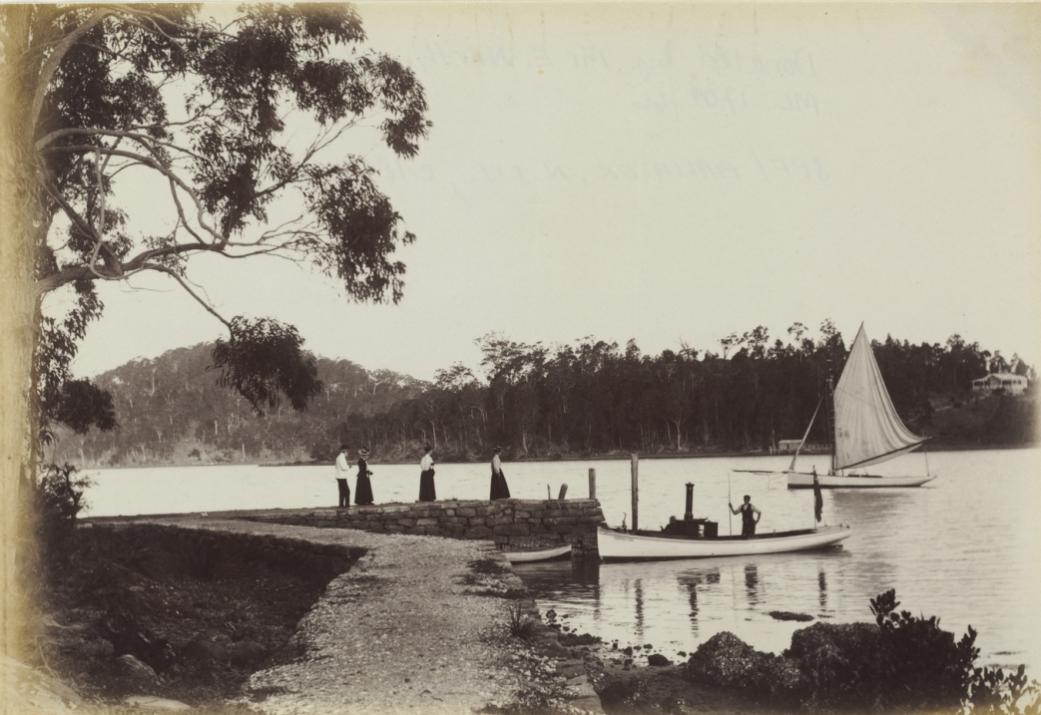



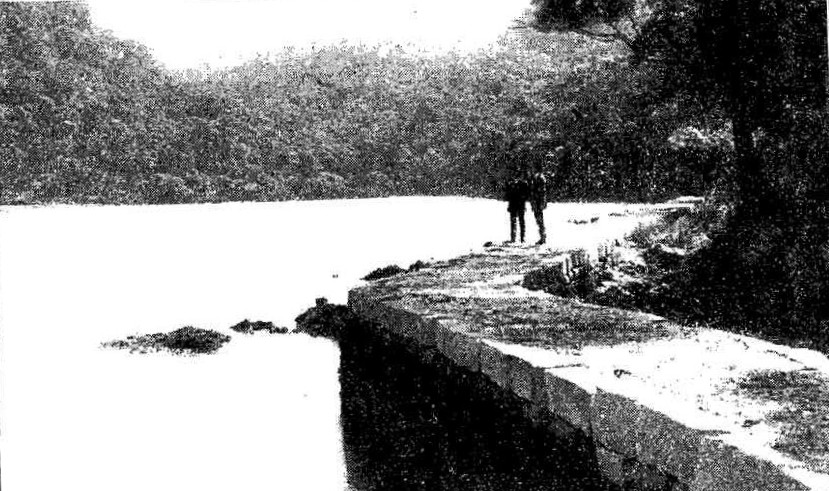
Lovett Bay, Pittwater. A charming inlet in the Ku-ring-gai Chase, which may, be reached by motor launches, to be hired at Newport, Bay View, or Church Point. From: THE BEAUTIFUL SHIRE OF WARRINGAH. (1915, April 7).Sydney Mail (NSW : 1912 - 1938), p. 34. Retrieved from http://nla.gov.au/nla.news-article166255867